A favorite of many gardeners, the hydrangea is a flowering shrub that produces large, showy blooms from summer through fall. Although the name hydrangea tends to conjure images of large globes of tiny flowers in shades of pink, blue, and white, there are at least 23 species of hydrangea (some sources suggest as many as 75) with varying shapes of blossoms and foliage, as well as different growth habits. Most are native to Asia, with five growing wild in North America. Only six types of hydrangeas are widely cultivated in the US.
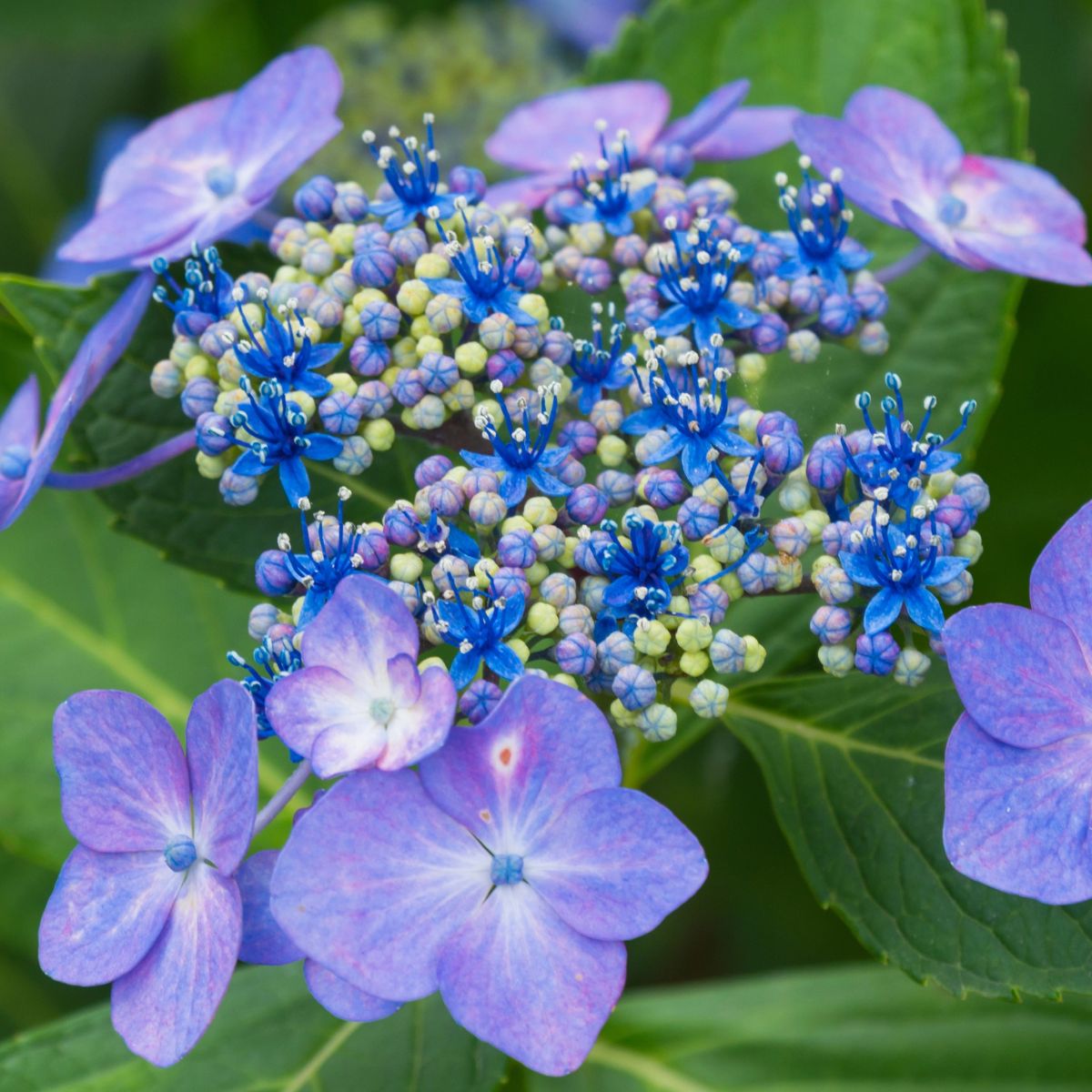
Types of Hydrangeas
1. Smooth hydrangea (Hydrangea arborescens)
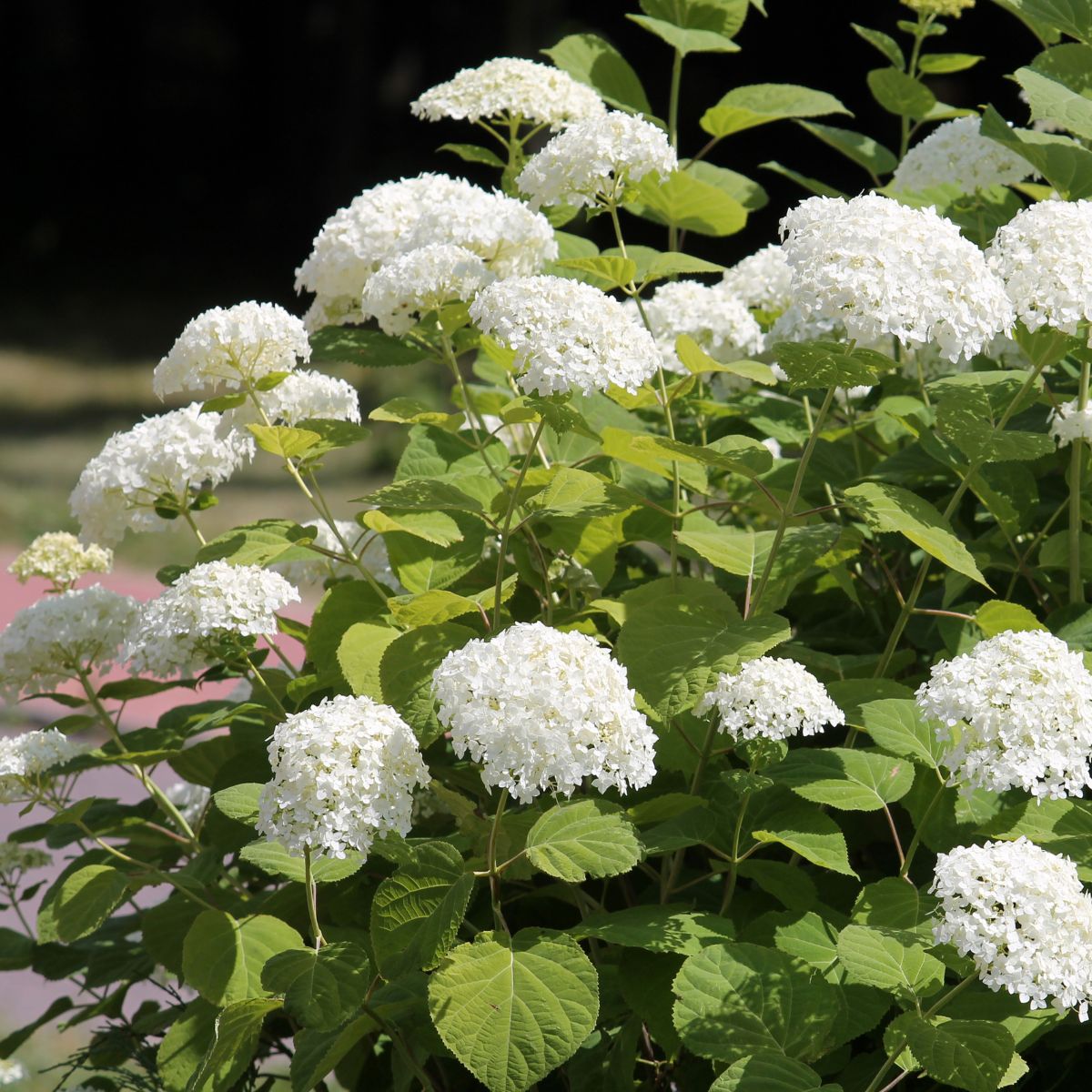
Also called wild hydrangea, smooth hydrangea is native to the eastern US. This widely branched shrub grows up to six feet tall, making it an excellent choice for planting as a deciduous, flowering hedge.
Its domed blossoms appear lime green when they first open in early summer, settle into a creamy white, then mature to tan in the fall. Broad, dark green leaves serve as a nicely contrasting background to the brilliant flowers and, contrary to the name, have sharply toothed edges.
This low-maintenance plant tolerates heat and drought and is also cold-hardy, thriving in zones 3–9. It appreciates dappled shade, especially in hotter regions.
Learn more about growing and caring for hydrangeas. And check out these 17 ideas for landscaping with hydrangeas in the front yard.
2. Bigleaf hydrangea (Hydrangea macrophylla)
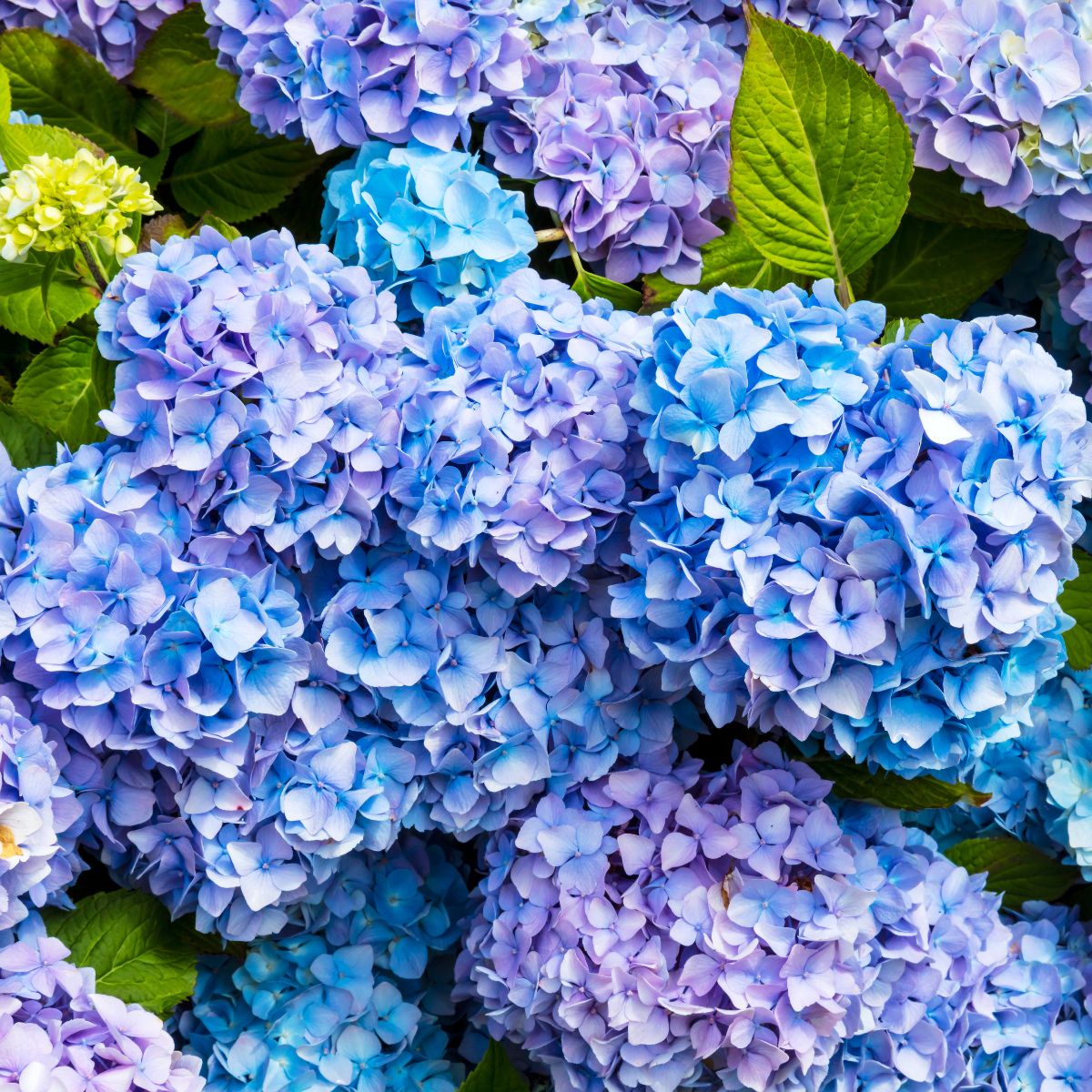
The most common of the garden varieties, bigleaf hydrangea is the species with blue, pink, white, or even purple flower clusters. Other common names of this species include French hydrangea, garden hydrangea, and florist’s hydrangea.
It produces great cut flowers and also works well as a hedge plant. Of course, behind the flowers are large, bold leaves. There are two subcategories of bigleaf hydrangea: lacecap and mophead. Both thrive in zones 6–9, and the height varies by cultivar, but most average four to five feet tall.
Lacecap hydrangea
Named for their lacey, flattened flower clusters, lacecap hydrangeas feature showy but sterile flowers encircling a tight central cluster of tiny fertile florets. These lovely, delicate blossoms fade after just one month, so consider pairing them with another variety for season-long blooms.
Mophead hydrangea
The mophead hydrangea is perhaps the most recognizable variety, featuring large, ball-shaped clusters of showy flowers. It blooms throughout the summer, lasting three to six months, before fading with the onset of cooler weather in fall. Unfortunately, the flower buds can be sensitive to cold and thus may not survive harsh winters.
3. Climbing hydrangea (Hydrangea anomala)
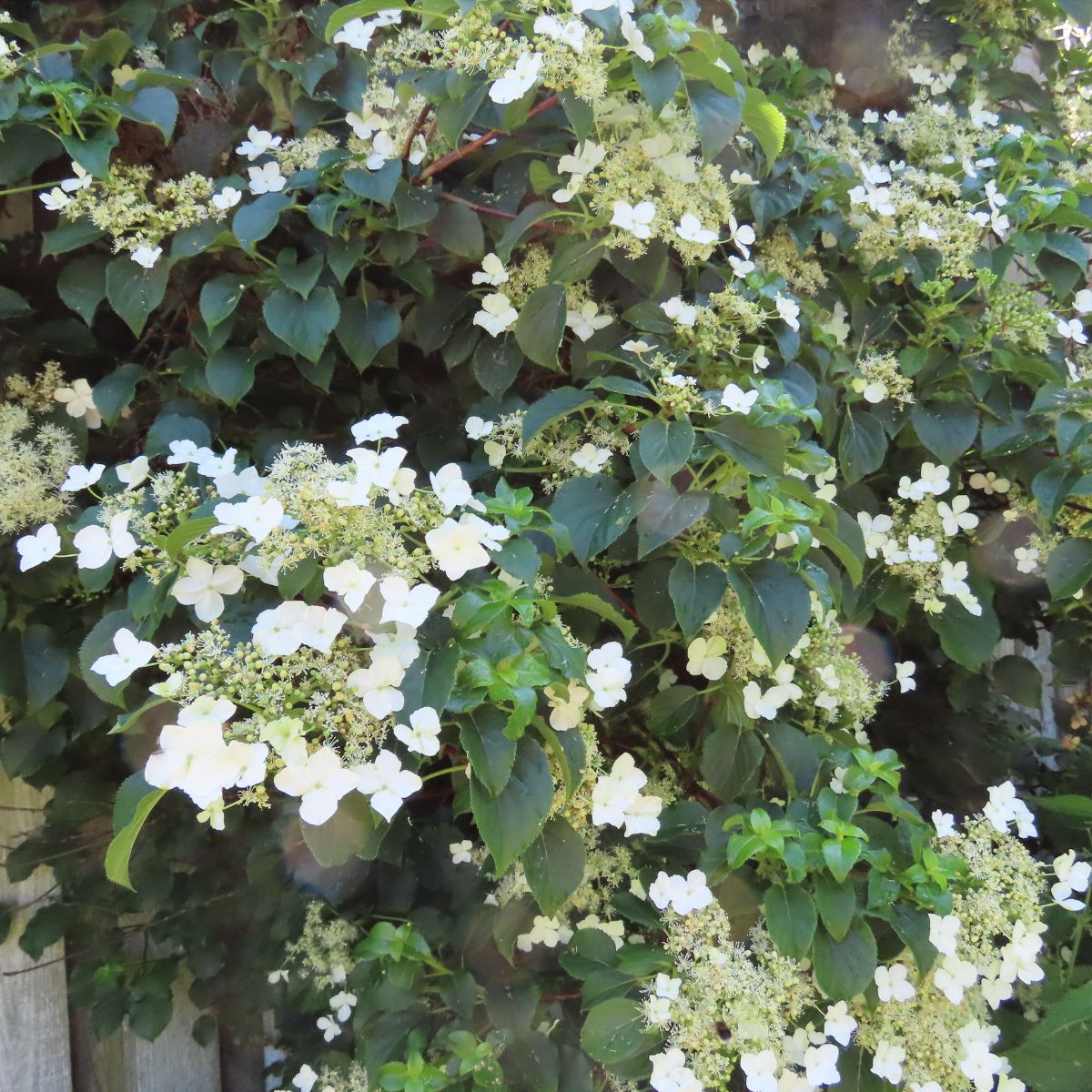
This unique hydrangea, actually a vine rather than a shrub, clings to support structures with aerial rootlets that grow along the stems. Given proper support, climbing hydrangea can reach remarkable heights. It thrives in USDA zones 4–9 and, unlike most vines, grows in partial shade as well as full sun.
In spring, shiny, dark green, heart-shaped leaves unfurl to adorn the plant throughout the summer. The foliage turns golden in the fall before dropping to expose beautiful reddish-brown, exfoliating bark that looks lovely in winter.
Lacy, flattened clusters of fragrant white flowers begin blooming in late spring or early summer. Plant this wonderfully versatile vine at the base of a sturdy trellis or wall and enjoy its delicate beauty all year.
4. Panicle hydrangea (Hydrangea paniculata)
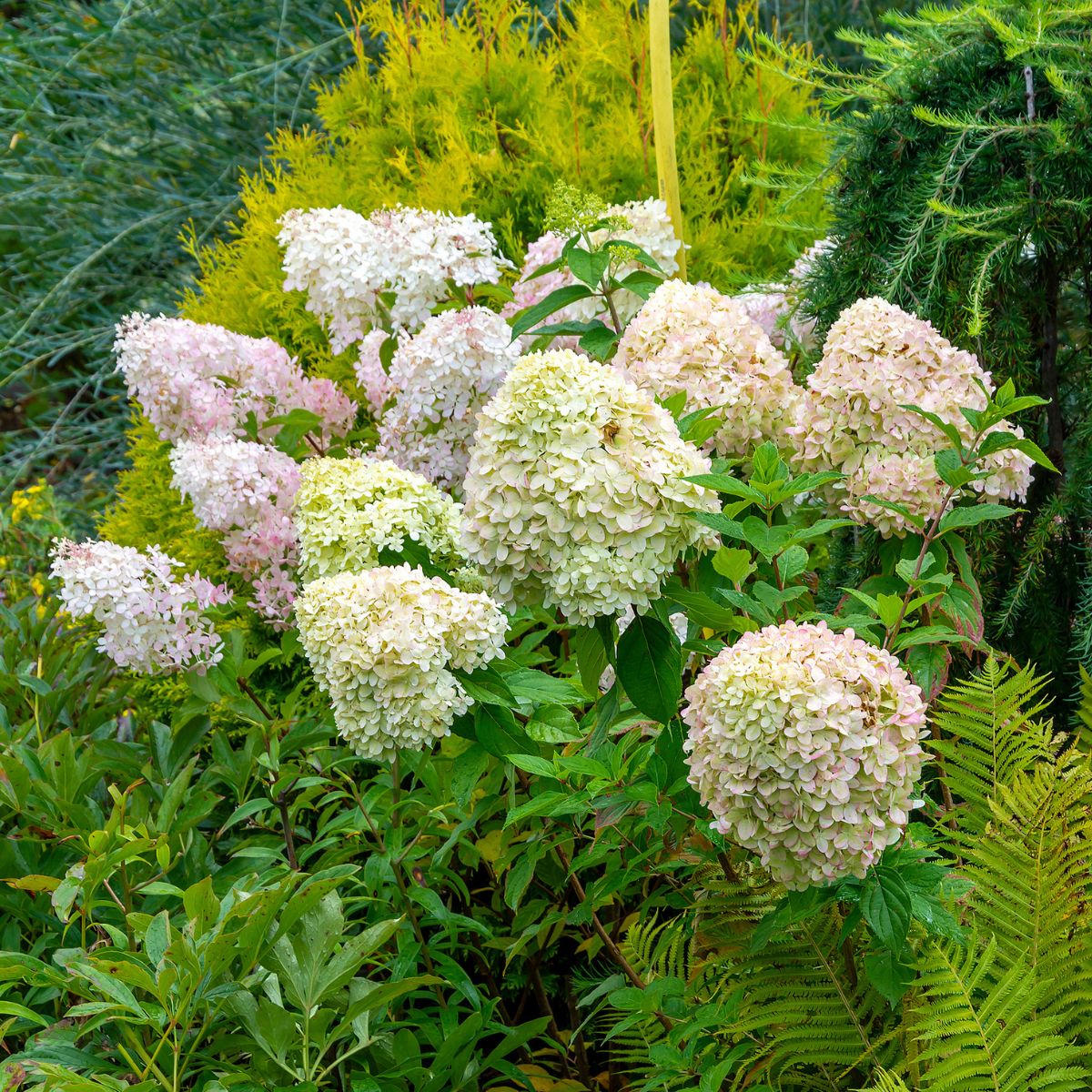
The tough, low-maintenance, cold-hardy panicle hydrangea can be grown just about anywhere (zones 3–8), including in full sun, and provides year-round interest.
From midsummer into fall, the semi-arching branches of this multistemmed shrub are laden with long, conical flower clusters.
As fall draws near, the snowy white blossoms turn pink and eventually brown. These dried flowers hang on through the winter, providing a subtle beauty that really shines against a snowy background. Cut these long-stemmed beauties at any time for fresh or dried arrangements.
Tree hydrangea
Panicle hydrangeas, especially the PeeGee hydrangea or the “Grandiflora” variety, can be grown as a single-trunk tree with careful pruning. These impressive flowering “trees” grow as tall as 25 feet, though the branches may dip toward the ground under the weight of so many blossoms in the summer.
Here are some tips for growing hydrangea trees in your garden.
5. Oakleaf hydrangea (Hydrangea quercifolia)
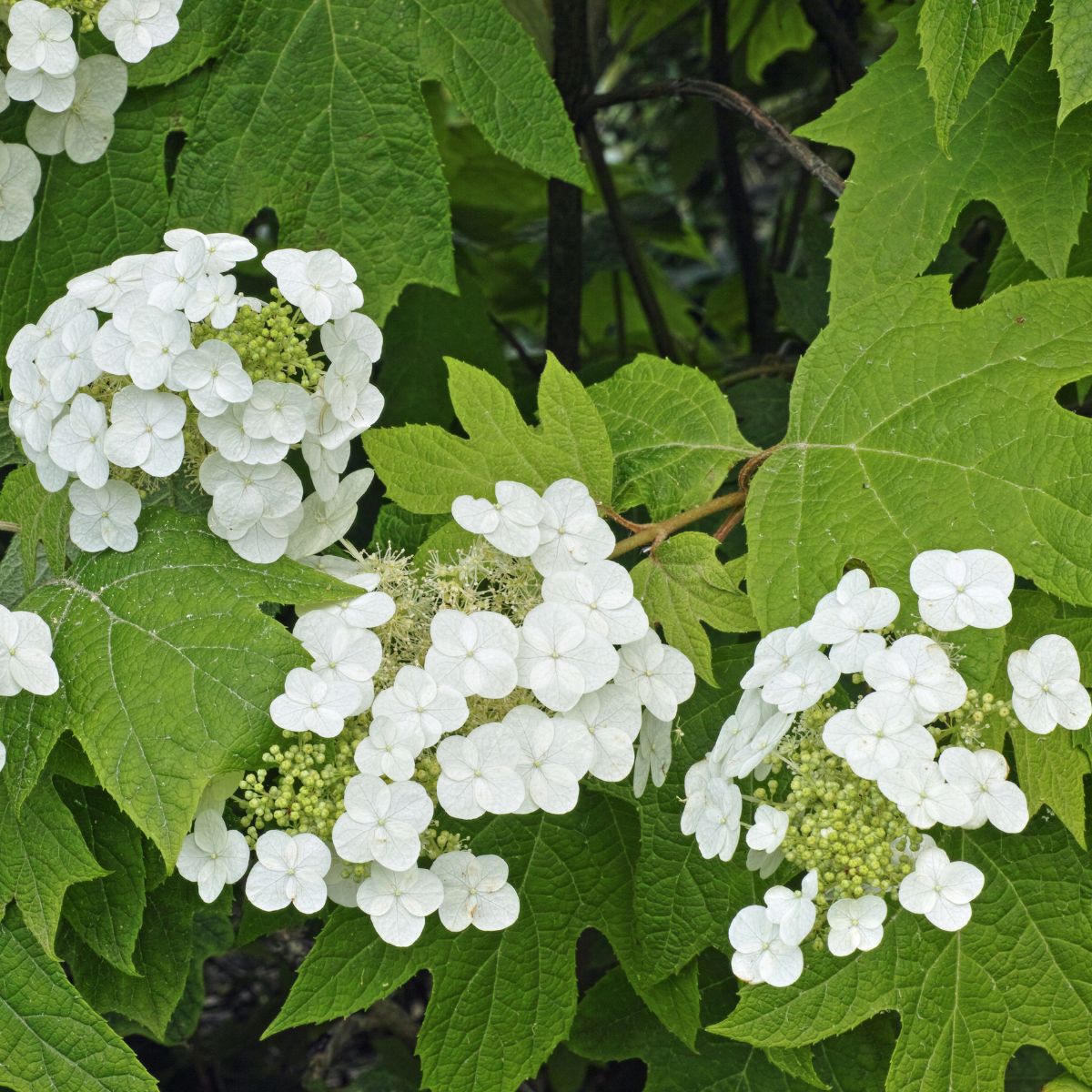
Oakleaf hydrangeas have, of course, foliage shaped like oak leaves. In the fall, these leaves turn brilliant golden orange, crimson, or burgundy, making the oakleaf hydrangea one of the most beautiful fall shrubs for the garden.
These plants look lovely in the winter, too: as the leaves drop, they expose papery, exfoliating bark. The abundant creamy-white flowers bloom in conical clusters in late spring or early summer and turn pink as the season draws to a close, especially on older plants.
Native to the southeastern US, oakleaf hydrangea is a hardy plant that thrives in zones 5–9. It tolerates dry conditions and appreciates partial shade in hotter regions but will grow in full sun where summers are cooler. Avoid planting in deep shade, which will result in muted fall foliage. Oakleaf hydrangeas grow up to eight feet tall.
6. Mountain hydrangea (Hydrangea serrata)
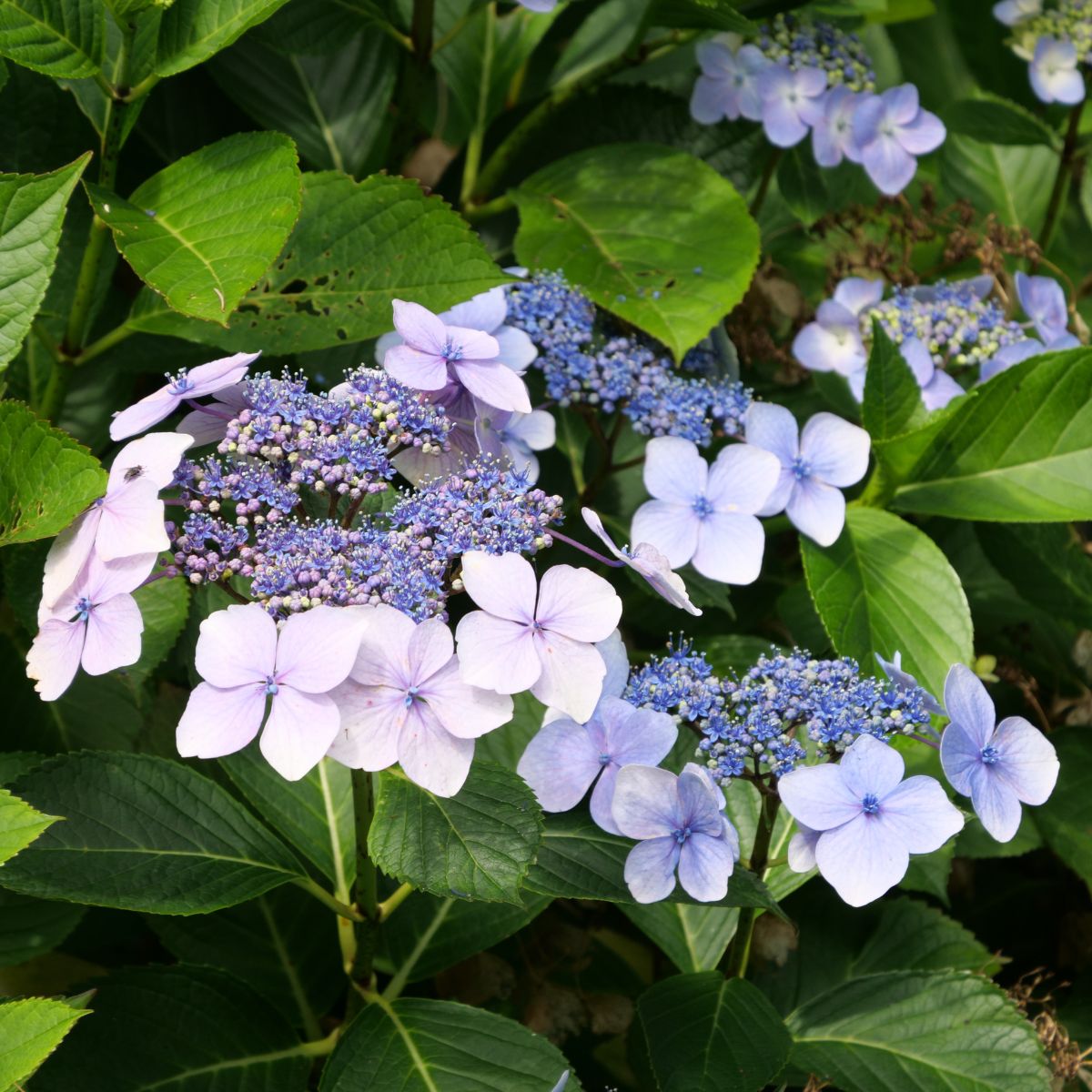
Similar to lacecap hydrangea, mountain hydrangea produces delicate, lacey, blue or pink flowers in flattened clusters throughout the summer. However, this rounded shrub has a more refined habit and smaller leaves and blossoms. The profuse, elegant flowers of mountain hydrangea come in shades of blue to deep pink.
Though vulnerable to deep cold, mountain hydrangeas are less susceptible to spring frosts than the more tender mopheads. This type of hydrangea is best grown in zones 6–9. With sufficient moisture, it will tolerate full sun, but for best results, provide mountain hydrangea with partial shade.
The best type of hydrangea for your garden
So, how will you choose which hydrangea to grow in your garden? Perhaps you’ll select more than one! The climbing hydrangea is an obvious choice if you are looking for an attractive perennial vine, or choose the panicle hydrangea for a showy flowering tree. Want bright colors, or even the ability to change the color of the bold blossoms? Opt for bigleaf or mountain hydrangea.
Learn more about changing hydrangea colors.
Smooth and panicle hydrangeas are the most cold-hardy, thriving as far north as zone 3. For winter interest, choose oakleaf or climbing hydrangea for their exfoliating bark, or panicle hydrangea for the lovely dried blossoms that hang on until spring. Remember that all hydrangea types prefer partial shade, though panicle hydrangeas actually do well in full sun too.
While these are the most popular types of hydrangeas in North America, there are many others you might want to look up to admire their beauty:
- Annabelle hydrangea
- endless summer hydrangea
- Nikko blue hydrangea bush
- different colored hydrangeas: from pure white hydrangeas to different shades of pink, and totally gorgeous blue hydrangea
- hydrangeas that grow on old wood, and others that bloom on new wood
- hydrangea bushes with large flower heads and plants that show off tiny flowers
- there are so many varieties of hydrangeas! Take some time to familiarize yourself with them before choosing the ones for your own garden
Whichever type (or types!) of hydrangea you choose to plant in your garden, you are sure to enjoy a profusion of showy flower clusters from this classic garden shrub.
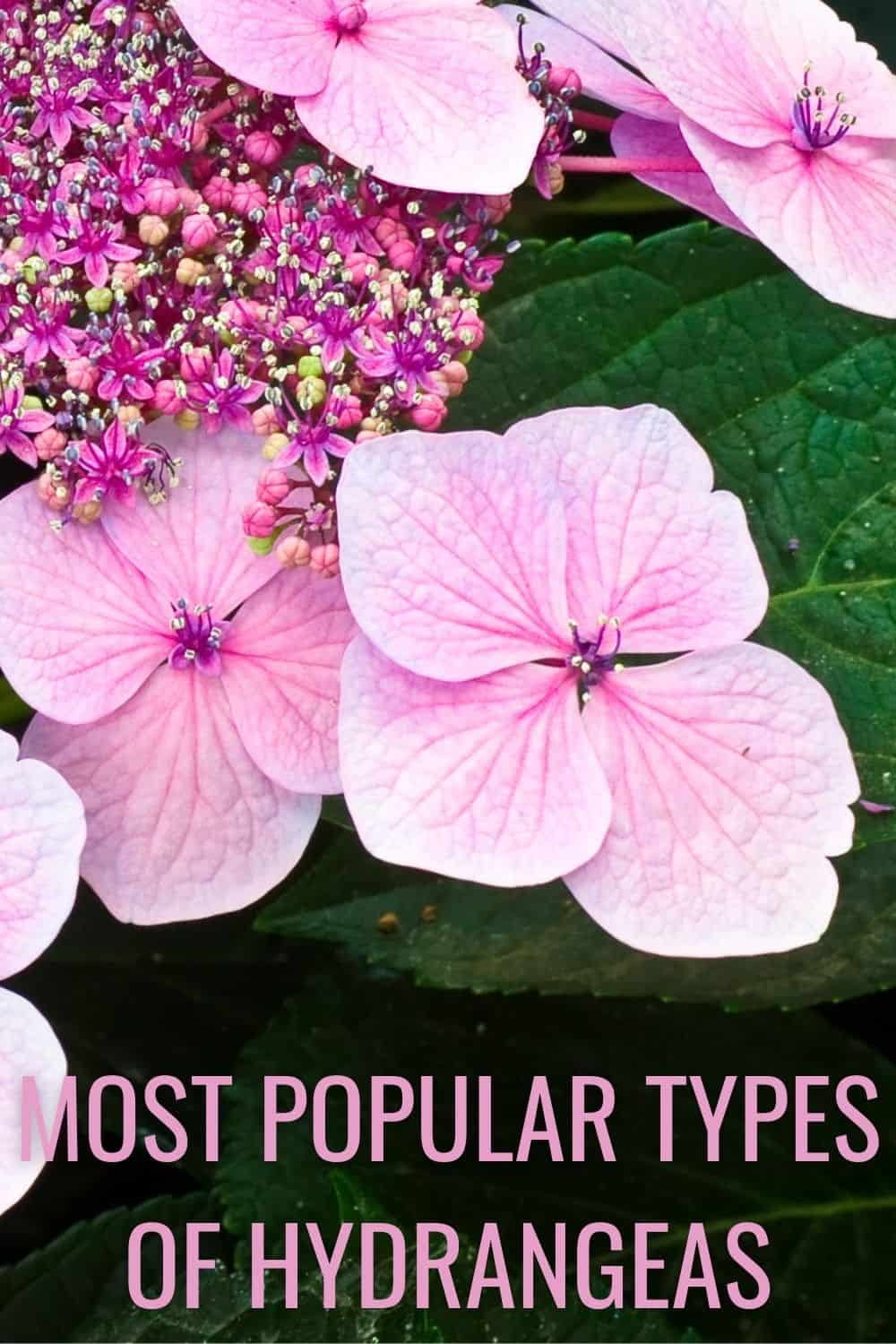

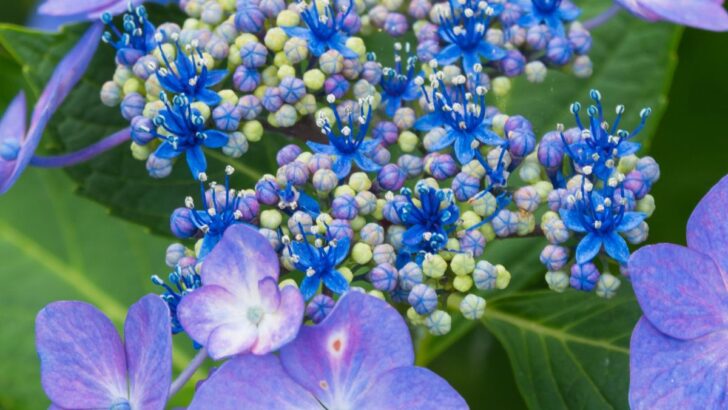





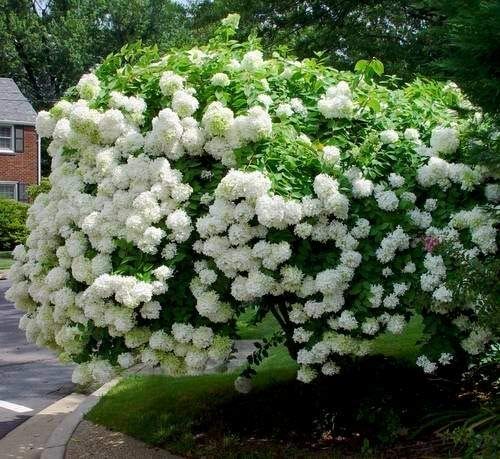




How To Prune Hydrangeas For Gorgeous Summer Flowers
Thursday 10th of November 2022
[…] hydrangeas are the most commonly known type of hydrangea with their big purple-blue or pink flower heads. Lacecap hydrangeas have a round central disc of […]
Why Aren't My Hydrangeas Blooming
Sunday 17th of April 2022
[…] how to make the best of this gorgeous flowering plant. However, it’s important to know the type of hydrangea you have and understand the season in which it blooms best. Sometimes the hydrangea variety can […]
8 Tips For Landscaping With Hydrangeas In Any Garden
Monday 7th of February 2022
[…] fact to keep in mind when considering the perfect location for your new shrub. Although many types of hydrangeas can be grown in full sun, most will be happiest in part shade, ideally morning sun and afternoon […]